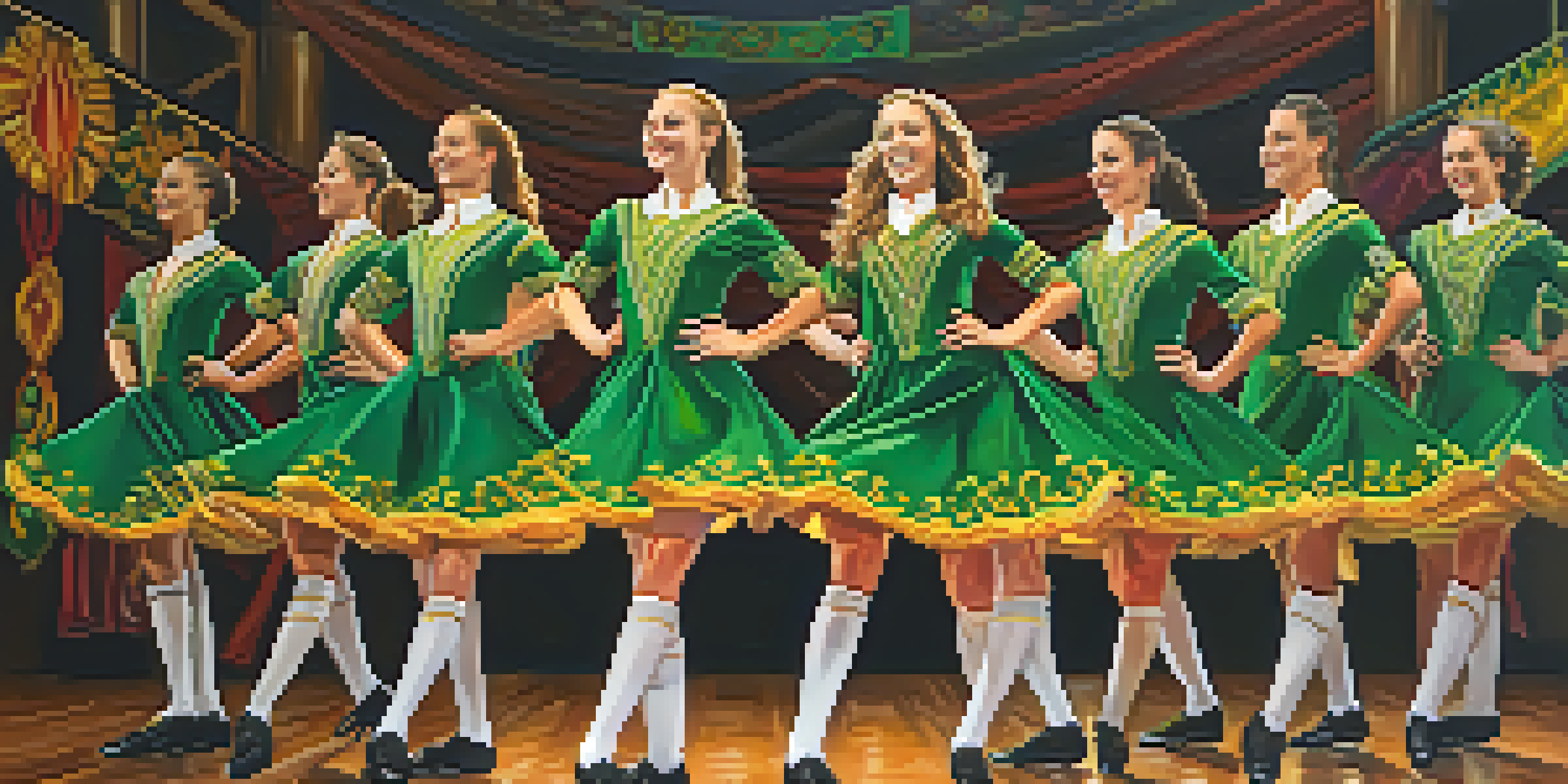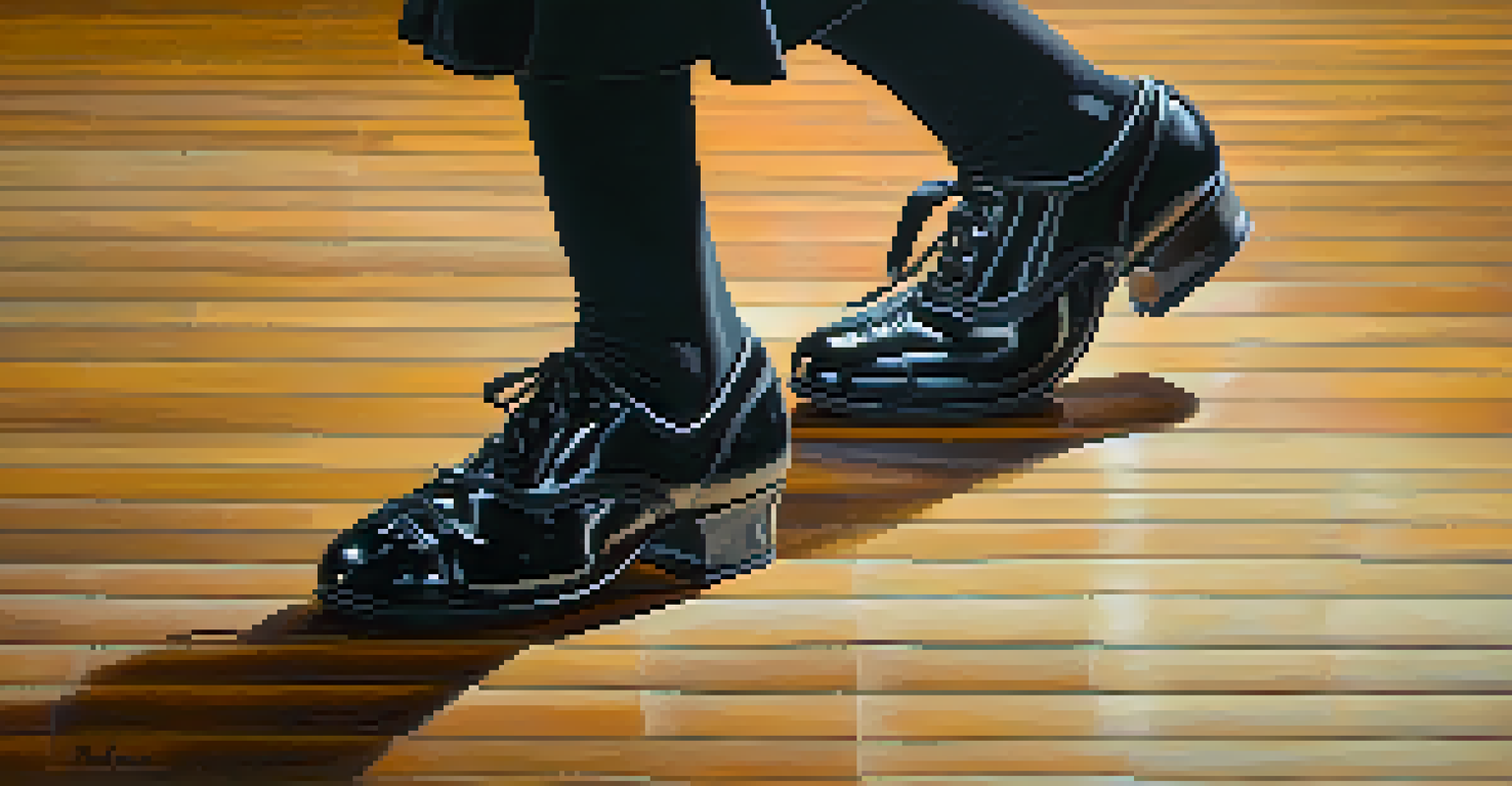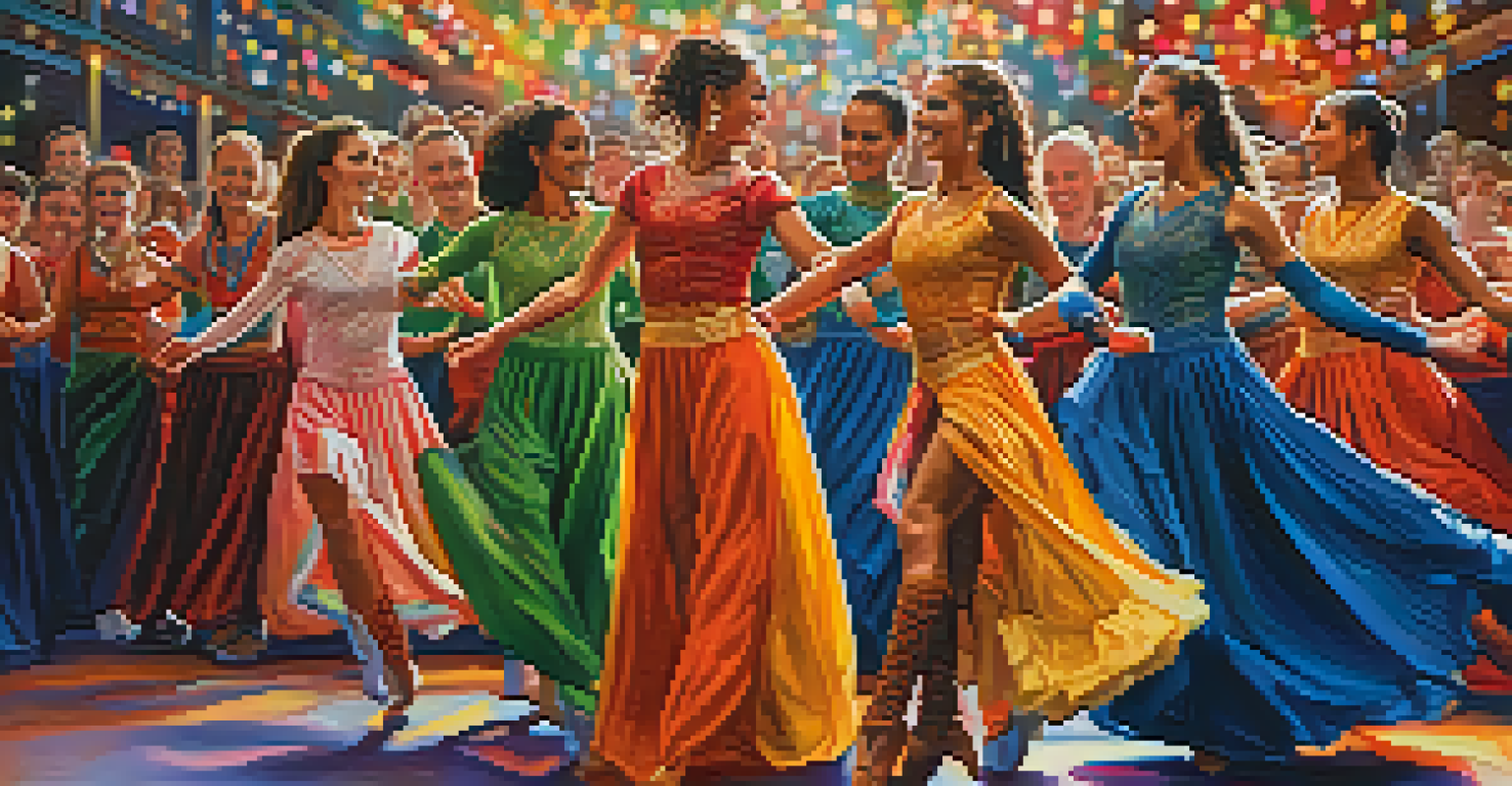How Irish Dance Has Adapted Through Global Cultural Exchanges

The Rich History of Irish Dance and Its Origins
Irish dance has roots that stretch deep into the fabric of Irish culture, with its origins dating back to ancient times. Traditionally, dance was a communal activity, often performed during festivals and celebrations, reflecting the stories and emotions of the Irish people. The lively rhythms of traditional music accompanied these dances, creating a vibrant atmosphere that united communities.
Irish dance is a celebration of life, a dance that expresses the spirit of the Irish people.
As Irish dance began to formalize in the 19th century, it started to gain recognition beyond its local settings. Influenced by historical events, such as the Great Famine, Irish emigrants carried their dances to various parts of the world, introducing them to new audiences. This migration led to a fascinating exchange where Irish dance began to evolve, absorbing elements from different cultures.
Today, the legacy of these early exchanges is evident in the diverse styles of Irish dance we see. From step dancing to céilí dances, the forms have adapted while retaining their cultural significance. This blend highlights the dynamic nature of the art form, proving that dance is not just a tradition but a living, breathing expression of cultural identity.
The Impact of the Irish Diaspora on Dance Styles
The Irish diaspora played a crucial role in shaping the global presence of Irish dance. As Irish immigrants settled in countries like the United States, Canada, and Australia, they brought their dance traditions with them, creating vibrant communities that celebrated their heritage. These gatherings not only kept the spirit of Irish dance alive but also led to new interpretations and variations.

In the United States, for example, Irish dance began to merge with other cultural influences, resulting in unique fusions that reflect a broader American identity. This blending of styles opened the door for innovative forms like tap dancing, which share rhythmic similarities with traditional Irish dance. Such cross-cultural exchanges enriched the dance landscape, making it more diverse and accessible.
Irish Dance's Rich Cultural Roots
Irish dance has deep historical roots, reflecting the communal spirit and cultural identity of the Irish people through vibrant performances.
Moreover, the rise of competitions and festivals in the diaspora promoted a sense of pride and connection to Irish roots. Events like the World Irish Dance Championships showcase the global reach of Irish dance, celebrating its evolution while honoring its origins. Through these gatherings, dancers from various backgrounds come together, fostering a sense of community and shared cultural appreciation.
Fusion of Irish Dance with Other Dance Forms
As Irish dance gained popularity worldwide, it began to merge with other dance forms, creating exciting new styles. This fusion often occurs in performances that incorporate elements from ballet, contemporary dance, and even hip-hop. These collaborations not only capture audience interest but also challenge traditional notions of what Irish dance can be.
Dance is the hidden language of the soul.
For instance, productions like Riverdance and Lord of the Dance have successfully blended traditional Irish dance with theatrical elements, mesmerizing global audiences. The incorporation of storytelling and innovative choreography has allowed these shows to reach a wider demographic, transcending cultural boundaries. This adaptability showcases the versatility of Irish dance, allowing it to thrive in a modern context.
Furthermore, these fusions often invite dancers from diverse backgrounds to participate, enriching the performance with a variety of perspectives. This collaborative spirit emphasizes the idea that dance is a universal language, capable of bridging gaps between cultures. As Irish dance continues to evolve, it remains open to new influences, fostering creativity and innovation.
Technological Advances and Their Influence on Dance
In the digital age, technology has significantly impacted how Irish dance is taught, performed, and shared globally. Online platforms and social media have made it easier for dancers to connect, collaborate, and showcase their work to a broader audience. This accessibility has democratized the art form, allowing anyone with an internet connection to learn and participate.
For example, online tutorials and dance challenges have gained popularity, encouraging people of all ages to engage with Irish dance. This trend not only sparks interest among newcomers but also helps to preserve traditional techniques as dancers share their skills and knowledge. The result is a vibrant online community that celebrates both the history and future of Irish dance.
Globalization Shapes Dance Evolution
The Irish diaspora and globalization have led to the fusion of Irish dance with various styles, enriching its diversity and appeal worldwide.
Moreover, virtual competitions and festivals have emerged, allowing dancers from around the world to showcase their talent without geographical limitations. These events foster a sense of global camaraderie, uniting participants through their shared love of dance. As technology continues to advance, the possibilities for Irish dance are limitless, highlighting its ability to adapt and flourish in changing times.
Education and the Globalization of Irish Dance
Education has played a vital role in the globalization of Irish dance, with schools and dance academies popping up in various countries. These institutions often incorporate traditional teaching methods while also embracing contemporary practices, creating a well-rounded approach to dance education. This fusion not only helps preserve the art form but also makes it more accessible to people around the world.
Many Irish dance schools now offer classes that cater to diverse skill levels, from beginners to advanced dancers. This inclusivity encourages individuals from different backgrounds to explore Irish dance, fostering a sense of community. Workshops and masterclasses led by renowned dancers provide unique learning opportunities, further enriching the educational experience.
Additionally, the inclusion of Irish dance in academic settings, such as universities, promotes research and scholarship around its cultural significance. This focus on education ensures that future generations understand and appreciate the rich history of Irish dance while also inspiring innovation. By nurturing a global understanding of this art form, education keeps the spirit of Irish dance alive and evolving.
Irish Dance in Popular Culture and Its Global Appeal
Irish dance has made significant inroads into popular culture, capturing the hearts of audiences worldwide. From films and television shows to viral online performances, Irish dance is often showcased in various media, making it more relatable and appealing to a broader audience. This visibility has helped to demystify the art form, encouraging more people to engage with it.
The influence of popular culture can be seen in the rise of dance challenges on social media platforms, where Irish dance moves are often featured. These trends not only showcase the beauty of the dance but also invite creativity, as participants put their own spin on traditional steps. This playful interaction with Irish dance reflects its adaptability and relevance in contemporary society.
Technology Fuels Dance Accessibility
Advancements in technology have democratized Irish dance education and performance, making it accessible to a global audience through online platforms.
Moreover, collaborations with artists from different genres have introduced Irish dance to new audiences, further expanding its reach. Musicians, choreographers, and filmmakers are increasingly incorporating Irish dance elements into their work, creating a rich tapestry of cultural exchange. As Irish dance continues to thrive in popular culture, it solidifies its status as a global phenomenon.
The Future of Irish Dance in a Global Context
Looking ahead, the future of Irish dance appears bright, with its ability to adapt and evolve ensuring its continued relevance. As globalization continues to shape cultural exchanges, Irish dance will likely embrace new influences while maintaining its core traditions. This dynamic interplay between heritage and innovation promises to keep the art form fresh and exciting for future generations.
Dancers and choreographers are increasingly exploring new themes and narratives, often reflecting contemporary issues and experiences. This evolution encourages a deeper connection with audiences, as the stories told through dance resonate on multiple levels. By weaving together traditional elements with modern narratives, Irish dance can remain a powerful form of expression.

Ultimately, the global journey of Irish dance is a testament to its resilience and adaptability. As it continues to inspire and connect people worldwide, the importance of preserving its rich heritage while embracing change will be paramount. The future of Irish dance is not just about preserving the past, but about celebrating its ongoing evolution in a diverse and interconnected world.